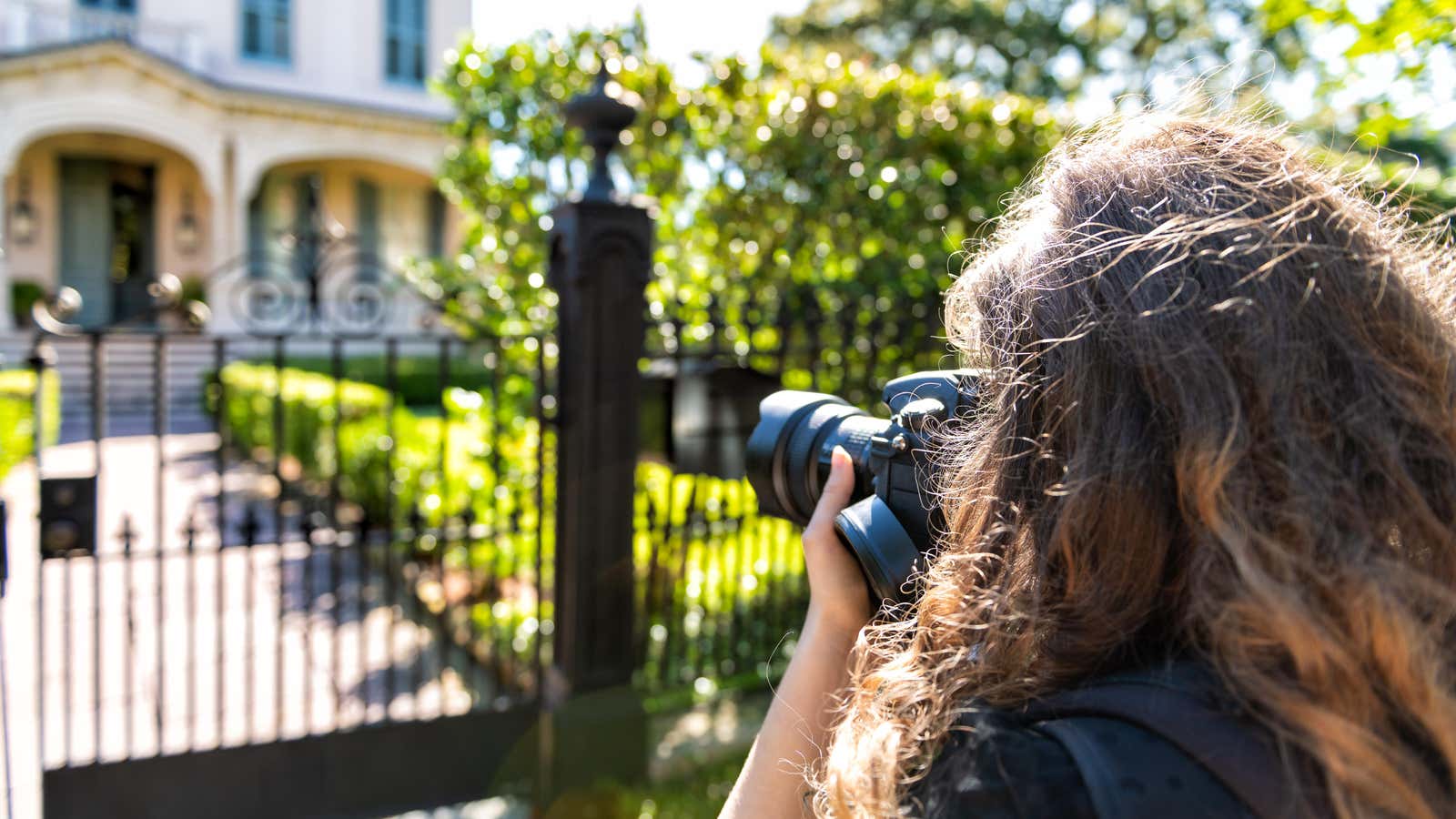All the Ways to Fool You in Real Estate Photography

Cheating has always been a part of the housing search process. We all know real estate TV shows lie to us all the time , but even professionals hired to sell or rent real estate to you are hard at work lying to you – mostly through the photos of the property they use in the ad. In a way, we can blame these showings – they have made it the norm that we should expect every property to be “desirable” and impeccably designed, organized and refurbished, which puts pressure on people trying to sell, you know, conventional residences. . . However, you can learn to resist by knowing the many ways real estate photography deceives you.
Wide-angle and stretched photos
The simplest and most well-known trick used when compiling property listings is the good old wide-angle lens. This trick is so common that most people expect it and mentally adjust on the fly when the third bedroom in a 1,500-square-foot home looks like a football field. Simply put, a wide-angle lens captures more in a photo than the human eye can actually see in the same space, making the room appear huge without actually manipulating anything.
However, some shady real estate professionals have resorted to a more aggressive trick: stretched photos. That’s exactly what it’s like to take a picture of a room and literally use software to make it look longer than it really is. Both of these tricks can be hard to spot when you’re scrolling through a list, especially on a phone, but there are simple things to look for. To spot a stretched photo, look for something at a fairly familiar size, such as the refrigerator in the kitchen. If stretched, it will look more square than rectangular. To notice the wide-angle violence, look at the walls – if you can only see two of them, the room is most likely much smaller than it might seem.
Low angles and perspective shots
One of the easiest tricks when photographing the exterior of a house is not even a trick, technically it’s just using an extremely low angle to make the yard look bigger and conveniently crop out unattractive features. PetaPixel pointed to a blatant example of this trick when the photographer apparently lay down on the lawn to photograph the house in such a way that the huge water tower overhanging the property was completely cut out and the house’s yard seemed more spacious than it was. in fact – and all this without the use of any photo manipulation. A few years ago, another real estate photographer used this trick to make a tiny backyard paddling pool look like an Olympic-sized pool—again, without even starting a computer.
Real estate photographers also often use tight shots to crop out unattractive details and confuse the viewer as to the size of the room. For example, if you have a small bathroom with a dirty tiled floor, they can shoot right into the door, which hides a narrow space and also cuts off the problematic floor conveniently. Again, this isn’t exactly lying to you, but it’s missing information.
Wetting of all external surfaces
Have you ever wondered why so many real estate photos seem to have been taken just as the sun comes out after a rainstorm? Often this is done on purpose. According to one real estate professional, wet outdoor surfaces will look brighter because the water will reflect more light, and they tend to look cleaner because we associate a good rinse with a freshly washed surface. Therefore, photographers often literally drain everything from the hose before taking photos.
Photoshop
Finally, of course, many real estate photographs are literally photoshopped into the uncanny valley of “truthfulness”. The most common photo manipulations have more to do with augmented reality than outright lies:
- Saturation adjustment. By making the sky bluer, the grass greener, and all the colors more vibrant, you can turn a boring backyard into a sunny retreat. Combine that with some low-angle tricks and your humble yard is suddenly the perfect setting for a glamorous party.
- Virtual staging. As long as it’s explicit, there’s nothing wrong with showing potential buyers and renters what a house might look like after it’s been furnished and decorated. Real estate photographs are increasingly showing rooms with a virtual design overlaid on them, but there are also subtler forms of this where more “trendy” design elements are added to give the room momentum.
But some real estate photos go from “augmentation” to outright lies, using more aggressive techniques:
- Adding elements. Some exterior photos fill a dying lawn with grass or even extend the grass line to make the yard look bigger and lusher. Fires are sometimes added to fireplaces to give the room a cozy feel.
- Removal of damage. Irregularities on the walls? Broken light bulb in the kitchen? No problem: they can be manipulated directly from there, and broken lights can be replaced with working versions . While this can be seen as just showing the room as it could be, it’s definitely problematic when you come in for a viewing and realize that there are a ton of issues that have been hidden from you.
- Get out. Photoshop can also be used to do the heavy lifting, like removing leaves from an uncleaned pool.
While the vast majority of property photos won’t outright lie to you – and you should always personally inspect a property before renting or buying – the cumulative effect of these tricks can waste your time when you’re traveling to see disappointing and unsatisfactory properties, as well as distort your expectations when it comes to reality.